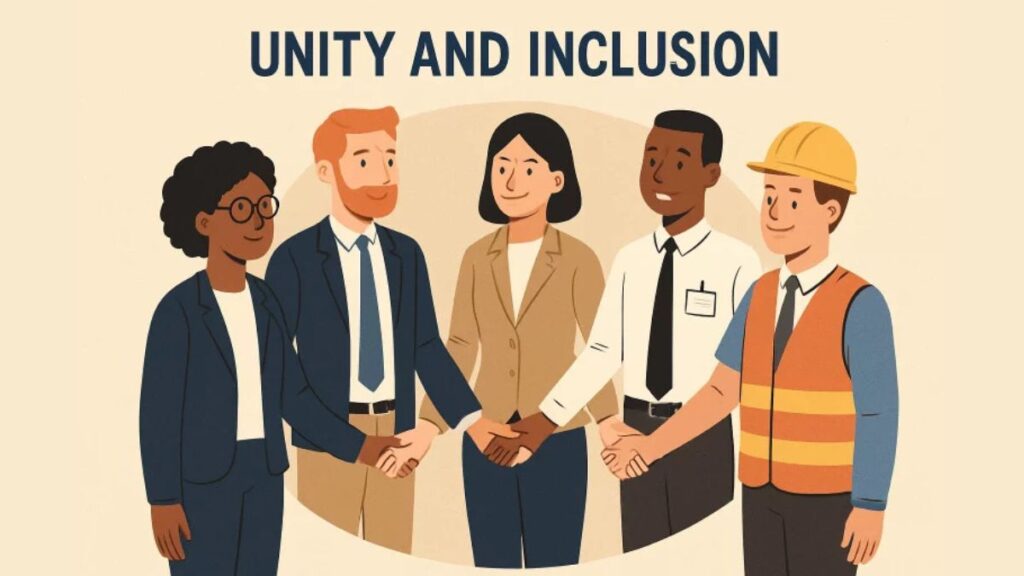Building a workforce that represents a variety of backgrounds is no longer just the right thing to do—it’s a strategic approach that leads to meaningful business outcomes. As today’s marketplace becomes increasingly globalized and interconnected, organizations are recognizing that diversity is a valuable asset. Forward-thinking companies understand that committing to diversity and inclusion hiring produces tangible outcomes: spurring innovation, deepening employee engagement, and boosting overall financial results. In a landscape where consumer expectations are evolving and competition is fierce, prioritizing inclusive hiring is no longer a “nice-to-have”—it is essential for future business resilience and sustained success. Organizations with inclusive cultures are not only better equipped to address the nuanced needs of their customer base but are also positioned as leaders in attracting the best talent from around the globe.
Adopting effective, inclusive hiring strategies ensures not just the recruitment of diverse talent but also the creation of an environment where every employee feels empowered to thrive. True inclusion goes far beyond meeting quotas or checking compliance boxes. It’s about embedding fairness, equity, and belonging into every touchpoint of the employee journey. This article explores in-depth and actionable strategies that companies can employ to champion inclusivity, starting with job postings, continuing through candidate evaluation, and culminating in fostering supportive and engaging work cultures over the long term.
Benefits of Inclusive Hiring
Implementing inclusive hiring practices yields far-reaching benefits that extend well beyond fulfilling corporate social responsibility initiatives. Organizations that prioritize inclusive hiring consistently report stronger business outcomes and more resilient teams.
- Enhanced Innovation: When people with different backgrounds, experiences, and perspectives collaborate, they bring fresh ideas and varied approaches to problem-solving. This creative synergy fuels breakthrough innovations, as employees challenge each other’s assumptions and devise solutions that might not occur within more homogeneous teams. As highlighted in this Forbes article, fostering inclusive hiring practices enables organizations to build diverse teams, unlocking untapped potential and driving sustainable innovation.
- Improved Financial Performance: Numerous studies have demonstrated a direct correlation between workforce diversity and superior financial results. Companies that cultivate diversity within their leadership ranks and across their teams tend to outperform less diverse competitors, as they are better equipped to anticipate market shifts and adapt their strategies. According to recent research, businesses with above-average diversity are much more likely to report higher-than-average revenues and profitability, giving them a distinct edge in a crowded marketplace.
- Broader Market Reach: A workforce that mirrors the diversity of its clients and communities is better equipped to understand consumer needs and create products or services that resonate with a wider audience. Employees from varied cultural or demographic backgrounds can provide critical insights into new markets, cultural preferences, and emerging opportunities. By cultivating true inclusivity, organizations position themselves to build richer customer relationships and expand their reach in today’s multicultural business landscape.
Expanding Recruitment Channels
To attract candidates from a diverse range of backgrounds, organizations must look beyond traditional recruitment tactics. Traditional sources, such as alumni networks or major job boards, often attract a narrow demographic and can unintentionally exclude talented individuals from underrepresented groups. Broadening outreach efforts includes:
- Partnering with Diverse Organizations: By establishing relationships with professional associations, advocacy groups, and community organizations that support women, people of color, veterans, LGBTQ+ individuals, and those with disabilities, companies can gain access to talent pools they might otherwise overlook. These partnerships often facilitate mentorship opportunities and foster trust with communities that have historically been marginalized in hiring processes.
- Utilizing Specialized Job Boards: posting open positions on niche job boards dedicated to specific demographics increases the visibility of roles to candidates who may not frequently visit mainstream platforms. Boards that cater to underrepresented groups—such as platforms for veterans, neurodivergent individuals, or ethnic minorities—can significantly expand both the quantity and diversity of applicants, making it easier to find talent that brings new perspectives and experiences.
- Attending Inclusive Job Fairs: Participating in job fairs and career events that prioritize inclusivity offers recruiters a direct way to engage with candidates who are committed to diversity. These events are often designed with accessibility and representation in mind, allowing organizations to build rapport with job seekers who might not respond to traditional outreach methods.
Crafting Inclusive Job Descriptions
The way a job posting is written can have a powerful influence on who feels qualified to apply and who feels unwelcome. Language is more than semantics—it shapes perceptions, encourages broader participation, and sets the tone for inclusivity from the very beginning.
- Use Gender-Neutral Language: Gendered terms, even subtle ones, can deter qualified candidates from applying. Using neutral phrases (“they/them,” “leader,” “candidate,” etc.) creates postings that are welcoming to all gender identities.
- Focus on Skills Over Credentials: Overemphasizing narrowly defined degrees, schools, or years of experience can filter out non-traditional candidates who possess the right skills but different backgrounds. Clearly highlighting the essential competencies for the role encourages a more diverse pool of applicants and helps shift hiring mindsets toward potential and ability.
- Highlight Commitment to Diversity: Explicitly stating that the organization values and actively fosters diversity signals to potential candidates that differences will be celebrated, not tolerated. Genuine language about equity, inclusion, and support encourages applicants from all walks of life to envision themselves thriving at the company.
Implementing Blind Recruitment
Biases, both conscious and unconscious, can creep into hiring decisions from the earliest touchpoints. Blind recruitment offers a tangible way to level the playing field, giving all candidates an equal chance regardless of personal identifiers. As noted in a SHRM article on blind hiring and workplace diversity, removing personal details from applications can help organizations focus solely on a candidate’s skills and experience, fostering more equitable hiring practices.
- Anonymous Applications: By stripping applications of names, photos, addresses, ages, genders, and even educational institutions, organizations can ensure initial screening is focused on skills, achievements, and job-relevant experience. This anonymity reduces the influence of stereotypes and assumptions, allowing for a fairer, merit-based evaluation process.
- Standardized Assessments: Employing clear, structured rubrics and work sample tests based on the role’s requirements further minimizes opportunities for biased decisions. By designing these assessments around actual job duties, employers can objectively measure a candidate’s ability to perform, regardless of their background or previous industry exposure.
These measures reduce opportunities for bias to influence hiring outcomes, allowing a significantly broader range of qualified candidates to progress through the pipeline.
Training on Unconscious Bias
Bias doesn’t always originate from overtly prejudiced views; in many cases, it takes shape at the subconscious level, influencing hiring decisions without the individuals being aware of it. Consistently training those involved in the recruitment process helps raise awareness, mitigate prejudices, and enable fairer outcomes.
- Regular Workshops: Ongoing educational sessions should focus on helping staff recognize their implicit biases and adopt concrete tools for overcoming them. Interactive learning, case studies, and real-world exercises can help hiring managers confront ingrained habits and practice more objective evaluation methods.
- Inclusive Interview Techniques: Standardizing interview questions creates a level playing field for all candidates, while training interviewers to assess relevant skills rather than commonalities or “gut feelings” helps eliminate favoritism. Including diverse panelists broadens the perspectives present in the room, resulting in better decision-making and more equitable hiring practices.
Embedding this training into company culture, rather than treating it as a one-off event, is crucial. Regular refreshers and open discussions make inclusivity a sustained and evolving focus.
Leveraging Technology
The right technology can help identify and address bias, making recruiting fairer and more efficient. Digital solutions enable companies to scale their hiring efforts while remaining vigilant against the risks associated with unchecked automation.
- AI-Powered Screening Tools: Advanced software can evaluate applications based on merit, analyzing skills, prior results, and role fit while suppressing demographic data. When carefully monitored, these tools can objectively screen thousands of resumes, reducing the effects of implicit bias and leveling the playing field.
- Data Analytics: Collecting and reviewing diversity metrics at every stage of the hiring funnel—applications, interviews, offers, and retention—enables organizations to spot disparities, fine-tune their approaches, and ensure that efforts are having the intended impact. These quantitative insights are crucial for accountability and continual improvement.
Of course, technology should always be deployed with a thoughtful, human-centered lens. Regular audits and a commitment to ethical practices help prevent new forms of bias and preserve trust throughout the hiring journey.
Fostering an Inclusive Culture
Hiring diverse talent is only the first step—lasting progress comes from nurturing a workplace where every employee is respected, empowered, and given equitable access to growth opportunities. The retention, engagement, and advancement of diverse employees often rely on the support structures and cultural tone established by the organization.
- Mentorship Programs: Pairing new hires with experienced mentors from similar or diverse backgrounds can provide guidance, build confidence, and help employees overcome barriers unique to their identity or experience. These relationships can accelerate the onboarding process and facilitate advancement.
- Employee Resource Groups: Affinity groups centered around shared identities or interests provide a safe space for employees to connect, share challenges, celebrate milestones, and collectively advocate for systemic improvements. These groups help foster a sense of belonging and give voice to diverse perspectives.
- Continuous Feedback: Actively seeking input and feedback from employees at all organizational levels fosters an environment of openness and agility. Listening to and acting on suggestions, concerns, and requests for improvement signals that the company takes diversity efforts seriously and is willing to adapt.
Inclusion is not a destination, but a continuous process of ongoing evaluation, learning, and evolution. By integrating these strategies into every aspect of recruitment and retention, organizations can unlock the full potential of their employees, driving sustained innovation and growth.







